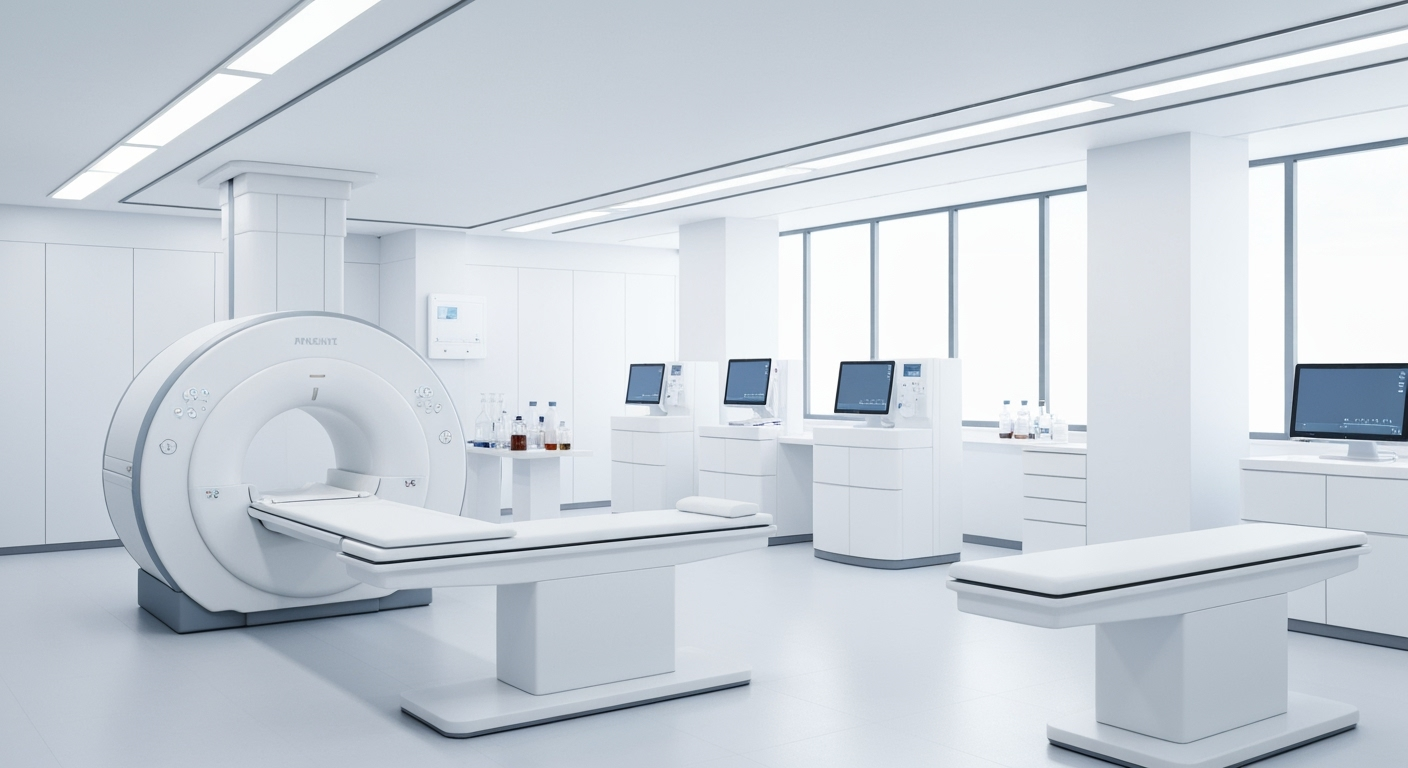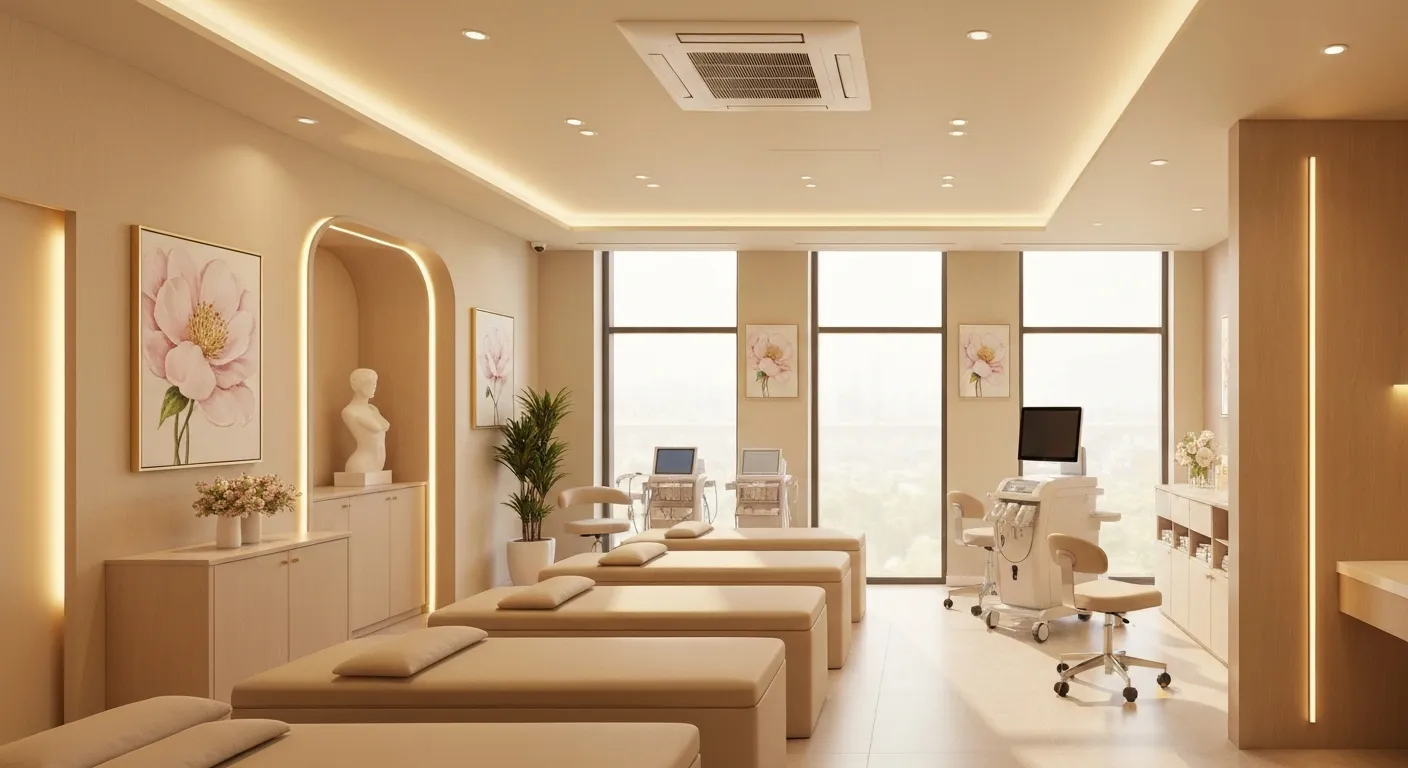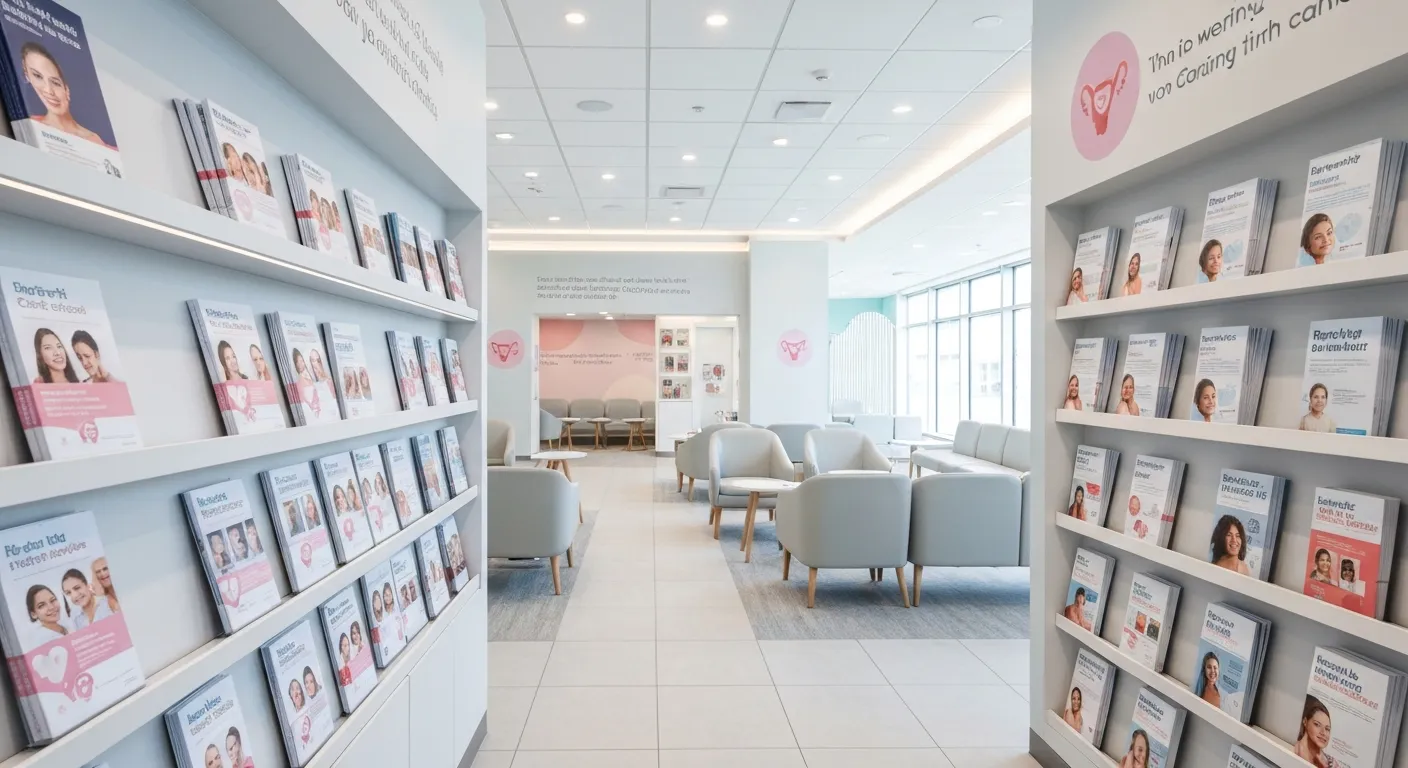Recognizing the Right Time to Address Female Infertility: Key Indicators and Expert Care in Queens

Understanding the Rising Role of Hysteroscopy in Gynecologic Care
As minimally invasive gynecological procedures gain prominence, hysteroscopy stands out for its diagnostic and therapeutic capabilities. This article delves into updated statistics on hysteroscopy procedure volumes, market size, success rates, safety profiles, and recovery outcomes anticipated in 2025. With technological advancements and growing clinical adoption, hysteroscopy is reshaping women's healthcare with improved efficacy and patient satisfaction.
Global Market Size and Volume Projections for Hysteroscopy Procedures up to 2025
 The hysteroscopy procedures market continues to show strong growth prospects across the globe. In 2024, the overall market was valued at around USD 13.90 billion, with the market expected to reach approximately USD 18.98 billion by 2030. This indicates a steady growth trend driven by advancements in technology and a rising preference for minimally invasive gynecological treatments.
The hysteroscopy procedures market continues to show strong growth prospects across the globe. In 2024, the overall market was valued at around USD 13.90 billion, with the market expected to reach approximately USD 18.98 billion by 2030. This indicates a steady growth trend driven by advancements in technology and a rising preference for minimally invasive gynecological treatments.
Looking specifically towards 2025, the market is projected to be worth roughly USD 14.72 billion, reflecting consistent expansion over recent years. The compound annual growth rate (CAGR) for the period from 2025 to 2030 is estimated at 5.21%, with some regions like North America and Asia Pacific experiencing higher growth rates. In fact, Asia Pacific is anticipated to grow at about 8.5% CAGR during this period.
Procedure volumes are expected to increase significantly. With technological innovations making hysteroscopy safer, more accurate, and more comfortable, healthcare providers are adopting these methods more frequently. As a result, the number of hysteroscopy procedures carried out annually is set to grow, aligning with the rising market value.
This growth is supported by factors such as higher rates of gynecological disorders, improvements in hysteroscopic devices, and increased healthcare investments globally. By 2025, the combined evidence suggests that the procedure volume will have reached a substantial level, contributing to the overall market expansion.
| Year | Estimated Market Size (USD) | CAGR | Notes |
|---|---|---|---|
| 2024 | 13.90 billion | - | Base year |
| 2025 | ~14.72 billion | 5.21% | Projected market value |
| 2030 | 18.98 billion | - | End of forecast period |
In conclusion, the outlook for hysteroscopy is optimistic, with ongoing developments ensuring increased procedure volumes and market size rises through 2025 and beyond.
Regional Market Leadership and Growth Drivers

North America market dominance
North America led the global hysteroscopy procedures market in 2024, capturing approximately 39% of the market share. The U.S. alone contributed a market size of USD 1.70 billion, with forecasts indicating it will grow to USD 3.67 billion by 2034. This region's leadership is driven by high adoption rates of minimally invasive gynecological procedures, advanced healthcare infrastructure, and significant investments in healthcare technology.
Asia Pacific growth rates
The Asia Pacific region is poised for rapid growth, anticipated to expand at a compound annual growth rate (CAGR) of about 8.5% from 2024 to 2034. This upward trajectory is fueled by increasing awareness of gynecological health, expanding healthcare infrastructure, and rising disposable incomes leading to higher healthcare spending.
Key drivers of market expansion
Market growth is primarily propelled by several factors. Increasing prevalence of gynecological disorders such as abnormal uterine bleeding and fibroids prompts greater utilization of hysteroscopy procedures. Technological advancements, including the development of less invasive and more precise hysteroscopic tools, enhance procedural outcomes and patient safety. Additionally, the shift towards outpatient treatments reduces hospitalization costs, making hysteroscopy more accessible.
These factors, combined with growing healthcare investments globally, especially in emerging markets, underscore the broad-based expansion of the hysteroscopy procedures market across regions. As a result, companies and healthcare providers continue to innovate and invest heavily to meet rising demand, fostering ongoing industry growth.
Technology and Innovation Advancing Hysteroscopy Effectiveness

What are the current trends and forecasts regarding the utilization and outcomes of hysteroscopy procedures through 2025?
Hysteroscopy is becoming increasingly prevalent as a first-line approach for diagnosing and treating various gynecological conditions, thanks to rapid technological innovations. Recent advancements include the development of miniaturized, high-definition hysteroscopes that enable clearer visualization while being less invasive. These improvements have significantly enhanced diagnostic accuracy, with success rates reaching as high as 94.8%.
The integration of artificial intelligence (AI) into hysteroscopic systems is another emerging trend, offering real-time decision support and improved detection of intrauterine abnormalities. Additionally, the adoption of single-use hysteroscopic devices minimizes risks of cross-contamination and reduces sterilization concerns, making outpatient procedures safer and more accessible.
From a market perspective, the global hysteroscopy procedures sector is poised for remarkable growth. The market size, estimated at USD 4.84 billion in 2024, is projected to rise to around USD 10.26 billion by 2034, with a compound annual growth rate (CAGR) of approximately 7.8% from 2025 to 2034. North America currently leads in market share, driven by high healthcare expenditure and the high prevalence of gynecological disorders. Meanwhile, Asia-Pacific is anticipated to surge at an even higher CAGR of about 8.5%, fueled by increased healthcare investments and demographic trends.
These technological advances have contributed to better patient outcomes through less invasive procedures, shorter hospital stays, and higher success rates. The shift towards outpatient hysteroscopy, with success rates around 99%, demonstrates how current innovations are transforming clinical practice, making hysteroscopy safer, more effective, and more widely accessible.
In summary, the future of hysteroscopy through 2025 looks promising, with ongoing technological improvements driving expanded indications, better diagnostic reliability, and improved patient experience, ensuring continued growth in this vital field of gynecology.
Clinical Utilization Patterns and Procedure Settings
In 2025, hysteroscopy procedures are increasingly shifting from traditional hospital settings to outpatient clinics and office-based environments. Hospitals still hold the largest share at about 52%, but ambulatory surgery centers and office procedures are expanding rapidly due to their convenience and cost-effectiveness.
The dominance of certain CPT code segments exemplifies these trends. In 2024, the CPT code 58558, used for visualization and treatment of intrauterine adhesions, accounted for approximately 36% of market share, making it the most utilized code. Meanwhile, the CPT code 58562, associated with fibroid removal, is projected to have the fastest growth rate from 2025 onwards.
Outpatient hysteroscopy shows promising clinical outcomes, with success rates reaching up to 94.8%, and patient satisfaction around 96%. These minimally invasive procedures are well tolerated, with pain scores significantly lower than inpatient options. Use of NSAIDs prior to procedures further reduces discomfort.
The shift towards outpatient and office-based procedures is supported by their high success rates, low complication rates between 0–1.5%, and cost savings of nearly $1,500 per patient. As technological advancements such as robotic assistance and improved visualization tools continue, it is expected that more procedures will be performed outside traditional hospital environments, enhancing accessibility and patient comfort.
Ultimately, these trends reflect a broader industry movement towards less invasive, more patient-friendly gynecological care, with an emphasis on efficiency, safety, and high-quality outcomes.
High Diagnostic Success Rates and Efficacy of Hysteroscopy
What are the success rates and efficacy data for hysteroscopy procedures expected in 2025?
Hysteroscopy has proven to be a highly effective procedure for diagnosing and treating various uterine conditions. By 2025, it is anticipated that these success rates will continue to be impressive, supported by ongoing technological advancements and improved surgical techniques.
Studies indicate that diagnostic hysteroscopy can achieve success rates as high as 94.8%. This high diagnostic accuracy makes hysteroscopy a preferred method for evaluating abnormal uterine bleeding and other gynecological issues.
In terms of treatment efficacy, hysteroscopy is particularly useful in addressing intrauterine adhesions, polyps, and fibroids. The CPT code 58558, which involves visualization and treatment procedures, accounted for a substantial market share in 2024, emphasizing its clinical importance.
In the context of infertility and in-vitro fertilization (IVF), hysteroscopy plays a vital role. It helps identify and treat uterine abnormalities that could impair fertility, with some procedures demonstrating a success rate of around 71.2% for suspected retained products of conception (RPOC). Factors such as smaller RPOC size and shorter intervals from pregnancy completion to hysteroscopy are associated with higher success.
The safety profile of hysteroscopy is also notable, with low intraoperative complication rates between 0–1.5%. Its minimally invasive nature, coupled with high patient satisfaction—reported at 96%—further supports its growing role in reproductive medicine.
Overall, hysteroscopy is expected to remain a cornerstone in gynecologic diagnostics and therapy, consistently providing reliable results with minimal discomfort and risk, particularly as technological innovations continue to enhance its effectiveness.
Low Complication and High Safety Profiles of Hysteroscopy Procedures
What does data indicate about hysteroscopy procedure outcomes, including success and complication rates?
Recent studies highlight that hysteroscopy is a highly effective procedure for diagnosing and treating gynecological conditions. Diagnostic success rates in outpatient settings reach as high as 94.8%, and overall success rates, especially for outpatient operative procedures like Myosure, are around 99%. These high success rates underscore the procedure’s reliability.
In terms of safety, hysteroscopy demonstrates a low complication profile. The overall complication rate remains between 0.2% and 1.5%. The most common adverse event is uterine perforation, which occurs in roughly 1% of cases but is generally manageable with proper technique.
Additional risks include fluid overload, infections, vasovagal reactions, and, rarely, air embolism. Fortunately, these incidents are infrequent. The advancements in hysteroscopic technology—such as saline distension media, smaller-caliber scopes, and enhanced visualization—have contributed significantly to reducing these risks.
The safety profile is further reinforced by the procedure's minimally invasive nature. Compared to more extensive surgical procedures, hysteroscopy offers a safer alternative with fewer complications.
Overall, the combination of high success rates and minimal risks makes hysteroscopy a preferred choice for many gynecological interventions. When performed by experienced clinicians and with proper protocols, it provides a safe, well-tolerated, and effective treatment option.
Patient Recovery Experiences and Post-Procedural Outcomes
Hysteroscopy is widely recognized for its safety and minimally invasive approach, typically resulting in quick and manageable recovery periods. Most patients can resume their regular activities within 24 to 48 hours following the procedure, especially when performed on an outpatient basis.
Post-procedure, patients often experience mild symptoms such as cramping, light vaginal bleeding, and some vaginal discharge. These symptoms are common and usually resolve within a few days without additional intervention. Serious complications such as infections, heavy bleeding, uterine perforations, or injury to surrounding organs are quite rare, occurring at rates below 1%.
Monitoring for signs of complications is essential for ensuring safety after hysteroscopy. Patients should be alert for symptoms like severe pain, heavy bleeding, fever, and foul-smelling discharge. Prompt medical attention is advised if any of these symptoms develop. Healthcare providers emphasize patient education on normal recovery patterns and when to seek urgent medical care.
Overall, hysteroscopy offers favorable safety outcomes with rapid recovery times, owing to its minimal invasiveness and adherence to safety protocols. With proper post-procedural care and monitoring, most patients experience effective treatment with minimal disruptions to their daily lives.
Pain Management Strategies and Patient Comfort During Hysteroscopy
Use of NSAIDs to reduce pain
Nonsteroidal anti-inflammatory drugs (NSAIDs) are commonly used prior to hysteroscopy procedures to help minimize pain during and after the process. Administering NSAIDs beforehand is a simple, non-invasive method that has been shown to significantly decrease patient discomfort, making the overall experience more tolerable.
Patient pain scores and tolerance levels
Research indicates that outpatient hysteroscopy procedures are generally well tolerated by patients. Most report minimal or no pain, with over 98% of patients expressing satisfaction with their experience. Pain severity, measured through visual analogue scales (VAS), tends to be low, and the overall patient satisfaction rate is approximately 96%. Importantly, pain scores for operative procedures such as Myosure are statistically lower compared to diagnostic hysteroscopies, with a mean difference of about 7.7 mm on the VAS, indicating a generally comfortable experience.
Comparison of operative versus diagnostic procedure discomfort
Studies comparing operative hysteroscopy to diagnostic procedures reveal that discomfort levels are manageable in both. Patients undergoing operative procedures, which often include removal of fibroids or adhesions, report slightly lower pain scores than those undergoing purely diagnostic procedures. The use of anesthesia is often unnecessary in outpatient settings, and pain during procedures is not significantly associated with factors like age, parity, or menopausal status.
In summary, employing strategies like pre-procedure NSAIDs, along with the minimally invasive nature of outpatient hysteroscopy, contributes to high patient tolerance and satisfaction. This approach ensures effective pain management, facilitating rapid recovery and positive patient experiences.
Economic Benefits and Cost-Effectiveness of Office Hysteroscopy
Cost savings per patient
Office hysteroscopy procedures have demonstrated significant cost advantages. Studies indicate that managing abnormal uterine bleeding with outpatient hysteroscopy results in roughly $1,498 in savings per patient. This reduction is attributed to the minimally invasive nature of the procedure, which often eliminates the need for hospital-based surgeries and reduces associated hospitalization costs.
Health economics in outpatient management
Outpatient hysteroscopy has become a preferred option due to its high success rate of around 99%, along with patient satisfaction levels reaching 96%. Most patients tolerate the procedure with minimal discomfort, especially when NSAIDs are administered beforehand, further decreasing healthcare resource utilization. These factors contribute to a more efficient allocation of healthcare resources, easing the burden on hospitals and outpatient clinics.
Economic impact of minimizing invasive procedures
By enabling diagnosis and treatment in a single outpatient visit, hysteroscopy significantly reduces the reliance on more invasive surgical interventions. This shift not only shortens recovery times but also helps healthcare systems save costs associated with operating room usage, anesthesia, and postoperative care. As a result, the overall economic impact is positive, supporting the ongoing adoption of hysteroscopy as a first-line procedure for many gynecological conditions.
Outpatient Hysteroscopy: Growing Patient Demand and Satisfaction
High patient satisfaction rates
Outpatient hysteroscopy has gained popularity due to its high success and satisfaction rates among patients. Studies report that over 96% of patients are satisfied with the procedure, citing minimal discomfort and effective results. The minimally invasive nature of outpatient procedures contributes significantly to this positive experience.
Willingness to repeat outpatient procedures
Patients undergoing outpatient hysteroscopy are often willing to repeat the procedure if necessary. Pain scores for innovative methods like Myosure are generally lower, and most patients express confidence in the outpatient setting, valuing the convenience and quicker recovery times.
Impact of outpatient setting on recovery and comfort
The outpatient setting enhances overall patient comfort, with over 98% reporting minimal or no pain. Using NSAIDs prior to procedures further reduces discomfort. When compared with traditional inpatient procedures, outpatient hysteroscopy facilitates quicker recovery, less anxiety, and a more positive experience, making it a preferred choice for both diagnosis and treatment.
Additional Insights
Recent data indicate that outpatient hysteroscopy procedures are highly tolerated, with success rates reaching nearly 99%. The procedures not only save costs—saving approximately $1498 per patient in managing abnormal uterine bleeding—but also improve patient satisfaction and overall healthcare efficiency. This trend is expected to continue growing as technology advances and more patients favor outpatient options.
Key CPT Codes Driving Hysteroscopy Procedures and Revenue Shares
The hysteroscopy market is significantly influenced by specific CPT codes that facilitate diagnosis and treatment. Among these, CPT code 58558 has emerged as the dominant segment in 2024, holding the largest revenue share of 36%. This code is primarily used for visualization and treatment of intrauterine adhesions, playing a crucial role in managing various gynecological conditions.
Complementing this, the CPT code 58562, related to fibroid (leiomyomata) removal, is experiencing rapid growth. It shows the fastest compound annual growth rate (CAGR) from 2025 to 2030, indicating a rising demand for minimally invasive fibroid treatments.
The revenue contributions by these segments highlight their importance within the hysteroscopy market. In 2024, the CPT 58558 segment accounted for approximately 34.8% of the total revenue, reflecting its widespread application in diagnostic and therapeutic procedures. Meanwhile, the expanding CPT 58562 segment is expected to generate substantial income, driven by technological advances and increasing prevalence of fibroids.
| CPT Code | Focus Area | Market Share (2024) | Growth Trend (2025-2030) |
|---|---|---|---|
| 58558 | Diagnosis & intrauterine adhesions | 36% | Stable but high demand for intrauterine issues |
| 58562 | Removal of fibroids | Fastest growth rate | Rapidly increasing owing to minimally invasive options |
These CPT codes not only indicate the procedural focus within hysteroscopy but also reflect the evolving landscape where minimally invasive and outpatient procedures are gaining prominence, shaping revenue streams and clinical practices alike.
Competitive Landscape and Industry Players Influencing the Market
Leading companies and recent developments
The hysteroscopy market features prominent players such as Medtronic, Stryker, Hologic, KARL STORZ, Olympus, and Boston Scientific. These companies continue to innovate with new product launches and strategic acquisitions to strengthen their market position. Recently, several players have introduced advanced hysteroscopy devices designed for minimally invasive procedures, improving diagnostic and treatment outcomes.
Product launches and acquisitions
Recent product launches include state-of-the-art hysteroscopic equipment with enhanced visualization features and integrated treatment options. Strategic acquisitions have also played a vital role in expanding product portfolios. For example, some firms acquired smaller tech startups focusing on smart hysteroscopy devices, aiming to streamline outpatient procedures and improve clinician and patient experiences.
Impact of innovation on market competition
Technological advancements are intensifying competition among key players. Innovations such as high-definition imaging, improved surgical tools, and integrated diagnostic and operative capabilities are setting new industry standards. These developments are not only driving product differentiation but also encouraging healthcare providers to adopt these cutting-edge solutions, propelling the overall market growth and fostering a dynamic competitive environment.
Emerging Trends: Ambulatory Surgery Centers and Future Growth Trajectories

Shift from hospitals to ambulatory surgery centers
Historically, hospitals have been the primary setting for hysteroscopy procedures, accounting for over half of all cases in 2024. However, there is a significant trend shifting towards outpatient facilities like ambulatory surgery centers (ASCs). This change is driven by the high success rate of outpatient procedures, patient preference for minimally invasive options, and cost-effectiveness.
Fastest growing segments and revenue share growth
The outpatient hysteroscopy sector, particularly procedures performed in ASCs, is expected to experience the fastest growth from 2025 onward. These centers are increasingly adopting advanced hysteroscopic techniques that allow for quick diagnosis and treatment with minimal discomfort. The utilization of outpatient hysteroscopy is also supported by patient satisfaction rates exceeding 96%, affirming its acceptability.
Forecasts for procedure settings by 2030
By 2030, outpatient settings are projected to dominate the hysteroscopy procedures landscape, with ambulatory surgery centers showing the highest growth rate. While hospitals will continue to handle complex cases, the shift towards outpatient clinics reflects a broader movement toward cost-effective, minimally invasive healthcare. This trend aligns with technological advancements, such as improved office hysteroscopy systems, which further facilitate this transition.
Regional Insights: Europe, Latin America, and Middle East & Africa
How do market trends outside North America and Asia Pacific look?
While North America and Asia Pacific lead the hysteroscopy market, regions such as Europe, Latin America, and the Middle East & Africa are also experiencing notable growth. Europe, with its advanced healthcare infrastructure and increasing prevalence of gynecological conditions, is seeing a steady rise in hysteroscopy procedures. Latin America presents opportunities due to expanding healthcare access and rising awareness about minimally invasive gynecological treatments. Meanwhile, the Middle East & Africa are gradually adopting newer technologies, driven by healthcare reforms and investments.
What are the growth prospects and healthcare investments in these regions?
Europe is expected to grow at a moderate rate, supported by governmental healthcare initiatives and a focus on women’s health. Latin America shows promising growth owing to rising healthcare expenditure and increased adoption of minimally invasive procedures. The Middle East & Africa are set to grow at a faster pace, fueled by infrastructure development and strategic collaborations with global medical device firms. These regions hold significant potential for expanding market share as awareness and access improve.
What challenges and opportunities do these regions face?
Despite positive signs, challenges such as limited healthcare budgets, uneven access to advanced medical technologies, and shortage of trained specialists pose hurdles in these regions. Conversely, there are opportunities for growth through targeted investments, training programs, and awareness campaigns. Regional market players and foreign companies can leverage these opportunities to expand their footprint. Additionally, developing cost-effective devices tailored to local healthcare systems may accelerate adoption.
Regional overview and future outlook
| Region | Market Growth Rate (Forecast 2025-2030) | Key Drivers | Challenges | Opportunities |
|---|---|---|---|---|
| Europe | 6.2% | Aging population, women’s health initiatives | High device costs, regulatory hurdles | Strategic collaborations, affordable innovations |
| Latin America | 8.0% | Increasing healthcare coverage, awareness programs | Limited infrastructure, training gaps | Local manufacturing, government funding |
| Middle East & Africa | 8.5% | Healthcare infrastructure growth, investment influx | Cost constraints, technology access | Market expansion, tailored product offerings |
Overall, these regions present promising markets with unique hurdles but significant opportunities for ongoing growth in hysteroscopy procedures.
Outlook for Hysteroscopy Procedure Trends and Outcomes Beyond 2025
Data-driven insights reveal that the hysteroscopy landscape through 2025 is characterized by robust market growth, driven by technological innovation, expanding clinical applications, and favorable safety and recovery profiles. With increasing adoption in both hospital and outpatient settings, patient outcomes are improving alongside heightened satisfaction and minimized complications. Regional leadership by North America and rapid gains in Asia Pacific shape the global market trajectory. The emphasis on minimally invasive approaches and cost-effective care models further solidifies hysteroscopy’s vital role in women's health. Ongoing advancements and evolving industry dynamics promise to sustain rising procedure volumes, enhance efficacy, and optimize patient recovery well into the future.
References
- Hysteroscopy Procedures Market Size and Forecast 2025 to 2034
- Hysteroscopy Procedures Market Size | Industry Report, 2030
- An Overview of Office Hysteroscopy | Current Obstetrics and ...
- Pain experience with outpatient hysteroscopy: A prospective cohort ...
- Hysteroscopy: Purpose, Procedure, Risks & Recovery
- Hysteroscopy: Procedure and Recovery Time - Dr. Seckin
- Hysteroscopy: What to Expect at Home - MyHealth Alberta
- Hysteroscopy With Dilation and Curettage: What to Expect at Home
- Hysteroscopy Procedures Market Size | Industry Report, 2030





.png)